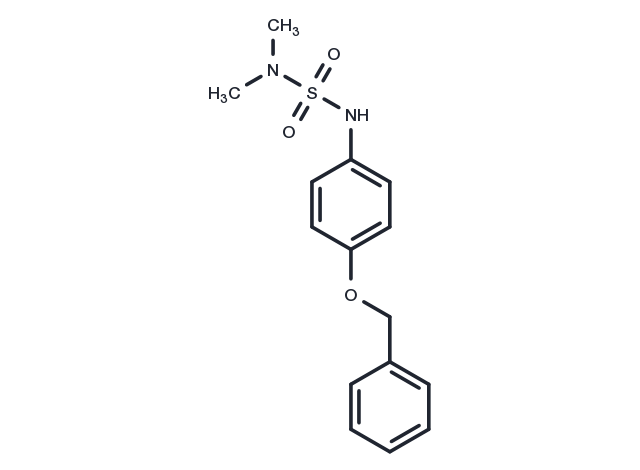Powder: -20°C for 3 years | In solvent: -80°C for 1 year


When administered intratumorally, AR antagonist 3 shows effective inhibition on the growth of tumor. AR antagonist 3 is a potent and selective antagonist of androgen receptor (AR) with an IC 50 of 0.47 μM. AR antagonist 3 dose-dependently decrease the FRET signal with an IC50 of 18.05 μM [1].

| Description | When administered intratumorally, AR antagonist 3 shows effective inhibition on the growth of tumor. AR antagonist 3 is a potent and selective antagonist of androgen receptor (AR) with an IC 50 of 0.47 μM. AR antagonist 3 dose-dependently decrease the FRET signal with an IC50 of 18.05 μM [1]. |
| In vitro | AR antagonist 3 (compound T1-12), administered at varying concentrations (0.01, 0.1, 1, 10, 100 μM), demonstrates significant androgen receptor (AR) antagonistic effects, evidenced by its potent inhibition activity (eGFP IC 50 = 0.47 μM; PSA IC 50 = 1.42 μM) and suppression of LNCaP cell proliferation. Furthermore, at concentrations of 0.1, 1, and 10 μM over 48 hours, it effectively reduces the protein expression levels of c-Myc and KLK3, indicating a notable impact on crucial AR-responsive proteins. Noteworthy is its dose-dependent reduction in the FRET signal (IC 50 = 18.05 μM), highlighting its inhibitory potency. Particularly at a 10 μM concentration and after a 2-hour exposure, the compound disrupts dihydrotestosterone (DHT)-mediated AR translocation to the nucleus in LNCaP cells, illuminating its functional mechanism. These findings are supported by cell viability and cell proliferation assays conducted on LNCaP-ARR2PB-eGFP and various other cancer cell lines (LNCaP, 22Rv1, C4-2, PC3, DU145), where the compound showed remarkable AR antagonistic activity and inhibited LNCaP cell proliferation across tested concentrations and incubation periods. |
| In vivo | AR antagonist 3, when intratumorally injected at a dosage of 2.5 mg/kg weekly for 25 days, successfully inhibits tumor growth, achieving a final tumor growth inhibition rate of 65% [1]. This study utilized 6-week-old male CB17 SCID mice of specific pathogen-free grade, weighing 18-24 g [1]. The consistent administration and dosage reaffirm the compound's efficiency in halting tumor progression within the specified experimental timeframe. |
| Molecular Weight | 306.38 |
| Formula | C15H18N2O3S |
| CAS No. | 349573-58-6 |
Powder: -20°C for 3 years | In solvent: -80°C for 1 year
You can also refer to dose conversion for different animals. More
bottom
Please see Inhibitor Handling Instructions for more frequently ask questions. Topics include: how to prepare stock solutions, how to store products, and cautions on cell-based assays & animal experiments, etc.
AR antagonist 3 349573-58-6 inhibitor inhibit
